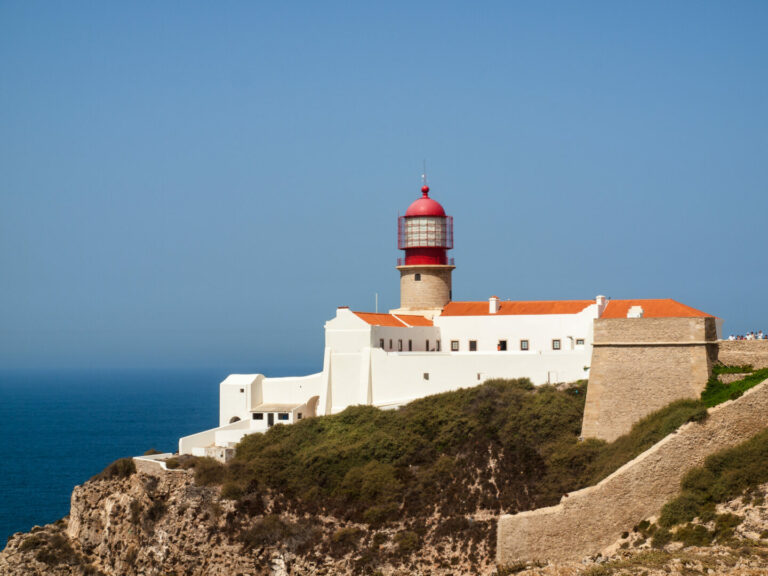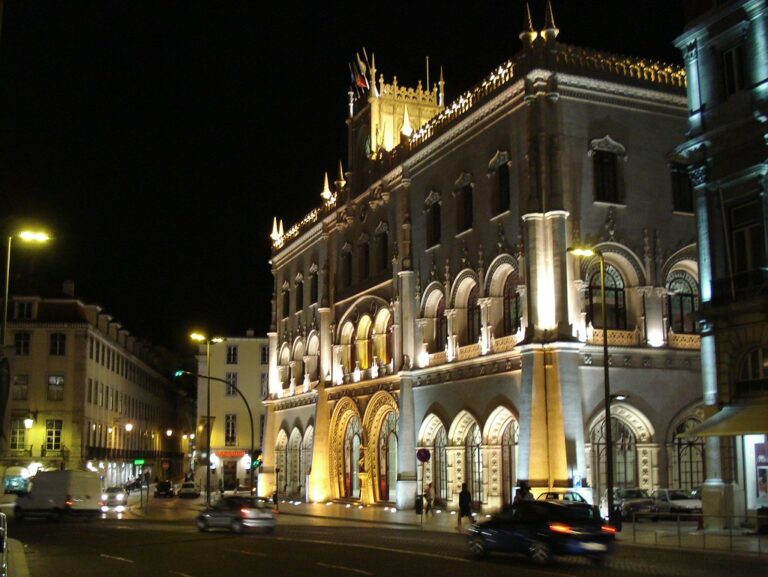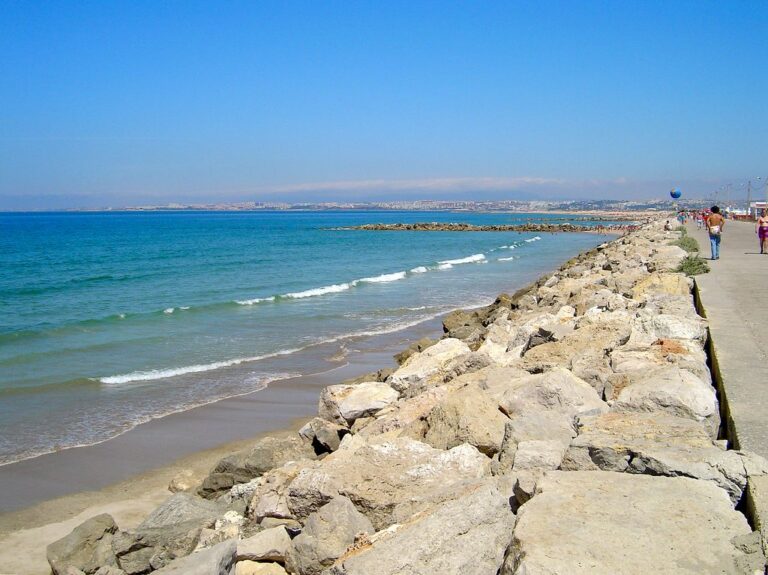As a first-time visitor to the Portuguese capital, the Lisbon buses are not as popular as the Lisbon metro 🚇, but it helps to know how to use them.
The Lisbon buses are essential in reaching certain parts of the city and are famous for day trips to some destinations around the city’s outskirts.
Lisbon boasts a vibrant yellow bus fleet that combines affordability, speed, and efficiency. Operated by Carris, these buses share the city’s transit landscape with trams and elevators.
At each bus stop, a detailed route map is displayed. At the same time, many stops also feature electronic displays indicating the minutes remaining until the next bus arrives, enhancing the overall commuter experience.
So, to help make things simpler when getting around Lisbon, you can follow this detailed guide.
Hot Tip🔥: Also, check out my guide on how to get to Lisbon when planning your trip and getting a sim card to remain connected.
Bus Operating Hours
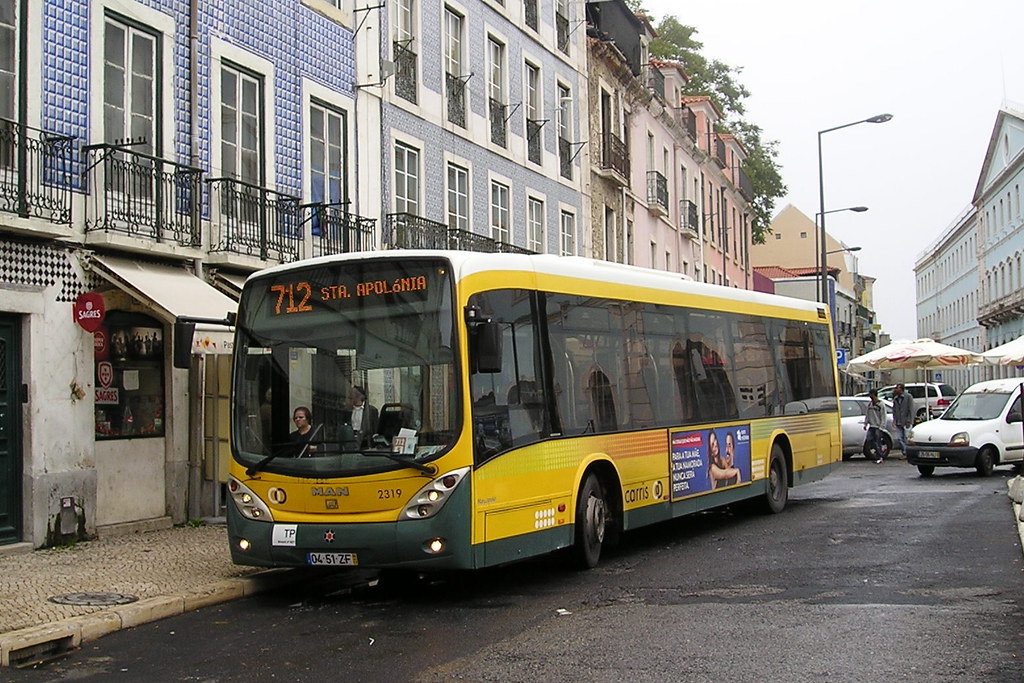
Generally, buses commence operations at 6 am and conclude around 9 pm.
The timetables and operating hours of buses in Lisbon vary based on the specific bus line.
Each line follows its own schedule, leading to diverse timings for different routes.
Some bus lines operate until midnight, providing transportation to late-night commuters and improving accessibility during extended hours.
The Easy Lisbon Quiz
Ready to test your Lisbon knowledge?
I’ve made an easy Lisbon quiz with 5 questions. Let’s see if you can get them right. 🤞
Lisbon Buses: Night Buses
Lisbon features two categories of night buses: Rede da Madrugada (lines 201-210) and Night Bus (lines 1 and 2). The former provides services every day during intervals when daytime lines are inactive.
In contrast, the latter exclusively operates on weekends and the eve of public holidays. Notably, Night Buses (lines 1 and 2) offer a unique benefit as they are free of charge, making them a cost-effective and convenient option for those traveling during these specific periods.
Prices of Lisbon Buses and How to Pay
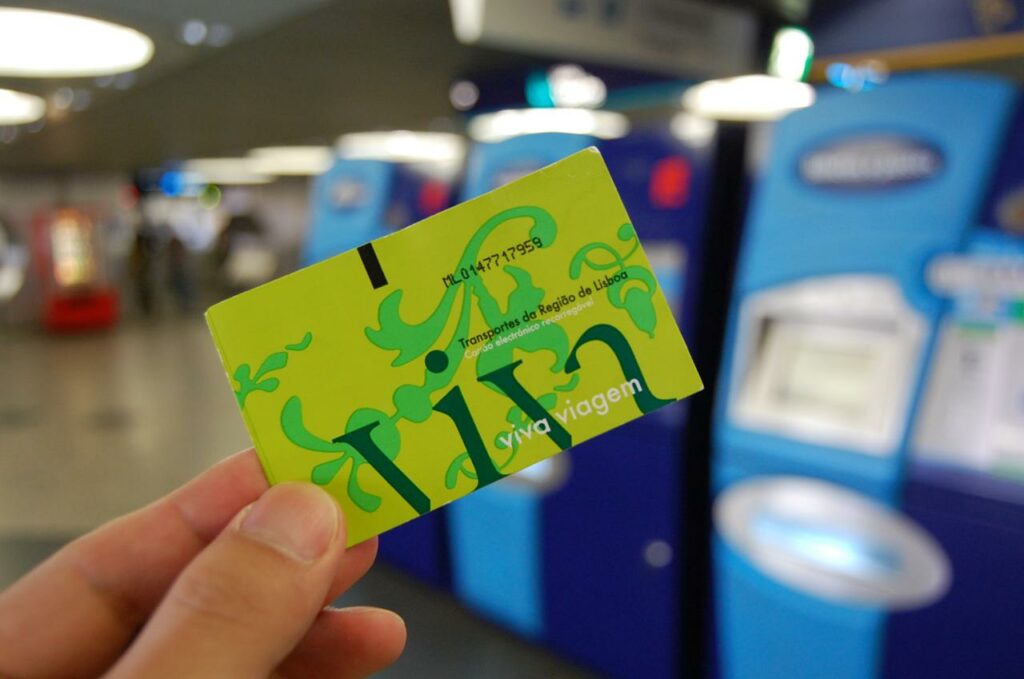
When boarding Lisbon buses for individual journeys, passengers can conveniently pay the current fare of 1.85 Euros directly to the driver upon entry. Alternatively, for a more streamlined and efficient experience, travelers can use the magnetic strip Viagem (Navegante) travel card or Lisboa card.
For those intending to explore Lisbon extensively, a cost-effective choice is a one-day ticket, priced at 6.15 Euros, covering both buses and the metro. This option allows unlimited travel within the specified timeframe, offering a practical solution for tourists navigating the city’s vibrant streets.
Visitors can invest in a rechargeable VIVA Viagem card to enhance convenience. You can quickly replenish this versatile travel companion card at ticket machines in various metro stations across Lisbon.
This option provides flexibility for multiple journeys and promotes sustainable and eco-friendly travel practices.
Overall, whether opting for single-journey payments, day passes, or rechargeable cards, Lisbon’s public transportation system offers a range of choices to cater to the diverse needs of both residents and tourists alike.
Planning On Going To Lisbon?
I’ve created a trip planner where you enter the number of days you’re going and what activities you want to do.
Based on your input, you then get an entire vacation planned with ideas.

Airport Bus Service: Aerobus Transport to And From Lisbon
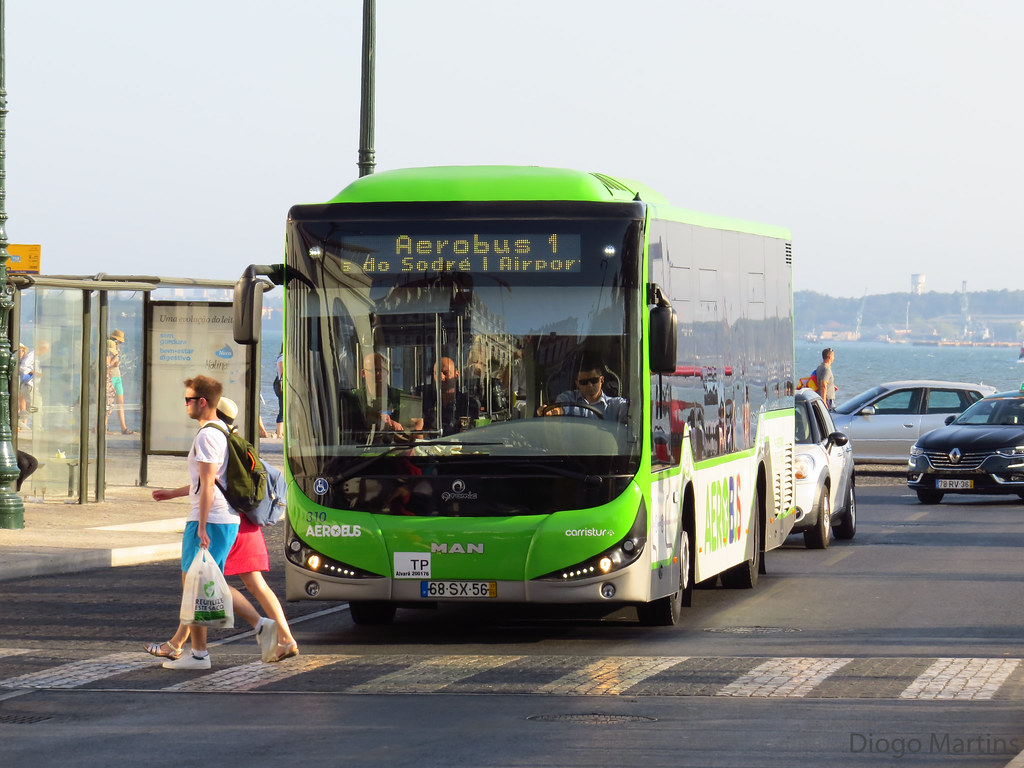
When landing at Lisbon Airport, three Lisbon buses are known as Aerobuses to reach the city and airport.
Aerobus #1 (City Center Route):
- Connects Lisbon Airport to the city center.
- Stops include Estação de Entrecampos, Campo Pequeno, Saldanha, Picoas, Marques de Pombal, Avenida da Liberdade, Restauradores, and Rossio.
- Departs every 20 minutes daily from 8 am to 9 pm.
- The journey time is approximately 30 minutes to Rossio station and 35 minutes in the opposite direction.
Aerobus #2 (Cais do Sodre Route):
- Connects Lisbon Airport to Cais do Sodre.
- Stops include Areeiro, Alameda D. A. Henriques, Plaça do Chile, Rua de Angola, Igreja dos Anjos, Martim Moniz, Rossio / Plaça da Figueira, Praça do Comercio, and Cais do Sodre.
- Departs every 20 minutes daily from 8.10 am to 9.10 pm at Martim Moniz and mentioned bus stations.
- Approximate journey time: 30 minutes to Cais do Sodre and 35 minutes in the opposite direction.
Aerobus #3 (Sete Rios Route):
- Operates from Lisbon Airport to the Sete Rios Coach Terminal (bus station) on weekdays, excluding public holidays.
- For Gare do Oriente, passengers can take the Red Line of the Lisbon metro (3 stops).
- Alternatively, an infrequent bus, #208, connects the airport to Cais do Sodre via Gare do Oriente, or more frequent options include buses #705 or #708.
Primary Bus Boarding Locations in Lisbon

In Lisbon, several key locations are primary points for catching buses, ensuring a well-connected and efficient transportation network.
- Rossio and Cais do Sodre train station is the key hub for bus commuters, providing convenient access and strategic boarding points.
- Moniz and Marques de Pombal are key bus pick-up points in Lisbon for residents and visitors alike.
- The Oriente and Apolónia stations are important transportation hubs that improve bus connectivity in the city and make the public transportation system more accessible and efficient. They also connect Lisbon to major cities.
- Sete Rios is a central bus station that offers long-distance buses to different parts of Portugal.
- Campo Grande helps with bus travel near Sporting Lisbon stadium. Check out the Carris Museum for historic buses that are no longer in service.
Furthermore, you can find ticket offices at most public transportation points.
Here are the best things to do in Lisbon In July 2024
I’ll send you a list of the best things to do in July and every month moving forward from today.
It’ll be based on my personal experience of living and traveling around Lisbon. A lot of hidden gems.
Primary Bus Routes in Lisbon
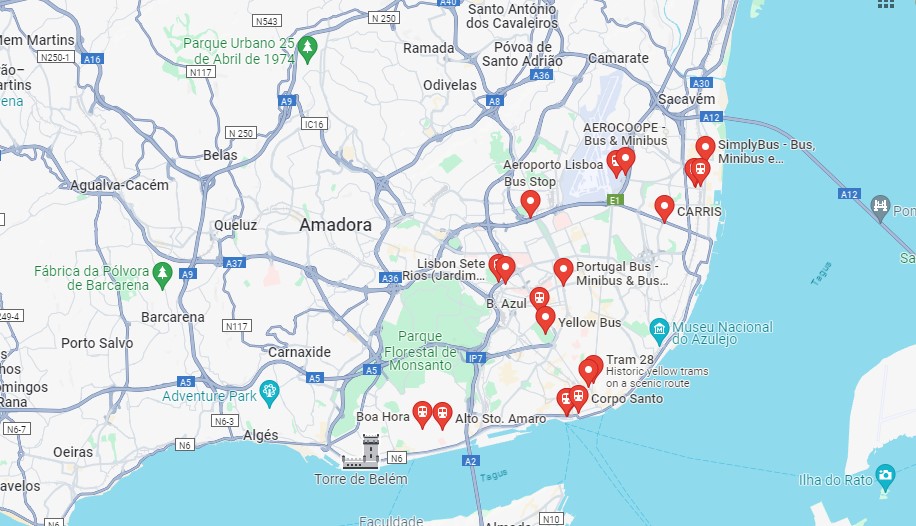
Key Bus Routes for Tourists in Lisbon comprise:
- 702: Connects Marquês Pombal to Serafina, offering a convenient route for exploration.
- 705: Travels from Oriente to Estação Roma-Areeiro, catering to various points of interest.
- 706: Links Cais Sodre to Apolónia Station, providing accessibility across key locations.
- 709: Covers Restauradores to Mq. Pombal, Rato, Jardim Estrela & Estrela offer a diverse journey.
- 711: Routes from Rossio via Restauradores to Mq. Pombal provides an essential connection.
- 712: Connects Apolónia Station to Alcântara Mar (Museu Oriente), offering scenic travel options.
- 714: Travels from Pç. Comércio to Belem & the Mosteiro Jerónimos, showcasing historic landmarks.
- 725: Links Oriente to Prior Velho-R. Maestro Lopes Graça, facilitating efficient travel.
- 727: Connects Restelo to Roma-Areeiro Station, offering a convenient route for commuters.
- 728: Routes from Restelo to Portela provide access to different areas.
- 730: Travels from Picoas metro station to Picheleira (Qta. Lavrado), offering a varied route.
- 732: Connects Marquês Pombal to Restauradores, Rossio, Cais Sodre & Caselas, ensuring comprehensive coverage.
- 735: Routes from Cais Sodré to Pç. Comércio, Apolónia Station, Areeiro & Av. Roma offers diverse destinations.
- 736: Links Cais Sodre to Rossio, Restauradores & Campo Grande, providing versatile travel options.
- 737: Travels from Pç. Figueira to the Sé & Lisbon Castle, showcasing historical landmarks.
- 744: Connects Marquês Pombal to Saldanha, Entrecampos, Oriente & Moscavide, offering a varied journey.
- 755: Routes from Sete Rio to Pç. Alvalade, ISEL, and Poço Bispo are catering to different locations.
- 758: Links Cais Sodre to Campolide and Sete Rios, ensuring connectivity across the city.
- 765: Connects Colégio Militar (Benfica Stadium) to R. João Ortigão Ramos, facilitating efficient travel.
- 767: Travels from Reboleira metro station, crossing the city to Campo Mártires Pátria, providing diverse connectivity.
- 781: Routes from Cais Sodre to Apolónia Station & Prior Velho, offering a convenient journey.
- 783: Connects Portela to Prior Velho – Amoreiras, ensuring connectivity between different areas.
- 794: Links Apolónia Station to Oriente Station, facilitating travel between key transport hubs.
- 799: Travels from Colégio Militar to Alfragide Norte, providing a convenient route for commuters.
Explore the diverse Lisbon bus routes, each offering unique travel experiences. For detailed maps, visit the Carris website.
The Advanced Lisbon Quiz
You’re now at the advanced Lisbon quiz with more difficult questions. No one gets every question right, so don’t beat yourself up on it. Good luck.
Wrap-Up: Full Guide Lisbon Buses
The Lisbon bus network is an efficient and affordable way to explore the city. Visitors can easily navigate Lisbon’s neighborhoods and attractions with various routes and ticket options.
Whether traveling solo or with a group, taking the bus is a convenient way to see everything this vibrant city offers. So don’t hesitate to hop on board and start your Lisbon adventure today!


